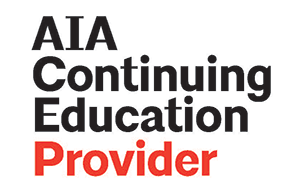 | 1 LU |
 | 1 LU |
What does it mean to create physical learning environments that embrace diversity, provide equity, and foster inclusion in their designs? What is the role of designers in connecting across cultures? Can facilities and designs be assessed for justice, equity, diversity, and inclusion (JEDI)? Are there tools to help designers create such environments?
This session will begin by exploring the importance of JEDI and how it spans societal practices, design practices, and built form. Broad issues of inequitable environments, with a focus on how racial bias and oppression influences our architecture and how it is perceived and used, will be used to highlight issues of JEDI in design. Explorations will include how designs can be either hostile or welcoming to entire cultures, races, abilities, identities, orientations, and other intrinsic human traits.
For many architects and planners, working with other cultures means working with disadvantaged and BIPOC communities. Developing the deep understanding of issues, from grand vision to the programmatic, that is needed for truly successful projects requires authentic communication and developing trust and respect. Specialized skills and practices needed for truly diverse communities will be demonstrated by people from rural and urban communities, touching on issues of language, meaning, historical perspectives, and code-switching.
Tools for assessing built and proposed designs through a JEDI lens will be demonstrated, with a case study of how it has been developed with high school students, educators, and community members working with architects and planners. Participants will use a version of this tool to analyze a space using a JEDI lens, with results shared amongst the whole group.
The concept of just, equitable, and inclusive designs can be challenging for many. A generation ago a paradigm shift in implementation of accessibility codes transformed how design is approached. Christopher Alexander’s A Pattern Language offered a menu-based approach. A diverse panel of designers, owner’s representatives, and outreach specialists will explore and engage participants in a discussion of JEDI-based design examples.
Learning Objectives:
Craig Atkinson, IBI Group
Craig leads IBI Group’s Southern California practice, with more than 27 years of experience with public projects in the educational and civic sectors, bringing extensive knowledge and ‘know how’ in community relations, project consensus building, design, planning, project delivery, and quality control. He has served on the Santa Barbara County, North County Board of Architectural Review, coached various sports including Special Olympics, and is currently lead of IBI Group’s firm-wide JEDI task force.
Christopher Locke, Designing in Color
Christopher is a Co-founder of Designing in Color, a collective of architects and designers of culture, and a designer at Egan Simon Architecture. DCo's mission aims to diversify the way architecture is taught and practiced to amplify marginalized communities who’ve been historically silenced and erased throughout the design process. DCo facilitates educational programming, creates workshops, designs socially responsible projects, and distributes digital initiatives, each meant to dismantle the systemic racism built into the practice of architecture.
Tyler Monk, The Contingent
Tyler is program manager at The Contingent, a community non-profit addressing injustices and vulnerabilities, and founder of inspirational story-telling company, The Underdog Mentality. With a Degree in program management and leadership theory, he was Hudson’s Bay High School’s GEAR UP manager in Vancouver, Washington, and continues to focus on deeply engaging students, helping them find their voice and career internships. “You can love people without leading them, but you cannot lead people without loving them.”
Rebecca Stuecker, AIA, ALEP, IBI Group
Rebecca is an architect and learning environment planner with deep design sensibilities and technical skills. She is an Associate Principal in IBI Group’s Portland office, with a passion for designing functional 21st-century learning environments with broad stakeholder involvement, facilitating student, teacher, and community engagement, ensuring all voices are heard. Over two decades, she has developed a broad spectrum of skills including facility assessment, pre-design, planning, design, and construction of educational facilities.
Rob Pillar, ALEP, INSPIRE Learning Environment Planning
Rob is founder and leader of INSPIRE Learning Environment Planning. He has over three decades of experience in architectural firm leadership, and learning environment planning and design. He earned his Bachelor of Architecture degree from Kent State University and an Advanced Certificate in Educational Planning from SDSU. He serves on A4LE’s Board of Directors, is Commissioner overseeing Accredited Learning Environment Planner accreditation process, and serves on the faculty of the Advanced Academy for Learning Spaces.
Ross Parker, AIA, ALEP, IBI Group
Ross is IBI Group’s Education Studio Lead in Seattle. He has a passion for culturally relevant, experiential design of educational facilities. His 3-decade architectural portfolio spans northern Canada, the UK, the US South, and the Pacific Northwest. Three of his projects are James D. MacConnell Award projects – 2010 recipient and 2004 and 2020 finalist. He is currently co-chair of A4LE’s JEDI Committee, and a member of NOMA-NW and AIA Seattle’s Diversity Roundtable.
Faye Strong, ALEP, Archiasmo Architectural Works Ltd.
Faye is a learning environment planner and project manager with Archiasmo Architectural Works Ltd. in Cochrane, Alberta. Her education includes degrees in Architecture and Math from Dalhousie University and for the past seven years has focused on educational work to develop, design and project manage Indigenous Education Projects. Her vision is to see equitable learning environments established within Indigenous Communities.
Tsuu’tina, First Nation Liaison
Saif Vagh, NAC Architecture
Saif is an Associate Principal and Designer at NAC Architecture’s Los Angeles office and a leader of the firm’s JEDI committee. As a design thinker, his experience working with a broad spectrum of clients has sculpted his view of how policy and the built environment can incorporate a broader perspective of inclusion.
Saif strives to create facilities that help break down stereotypical assumptions and help a broad cross-section of students grow and thrive. He has spoken on issues of designing for inclusivity and equality at numerous conferences and continues to lead valuable discussion in planning and executing the design of educational spaces.